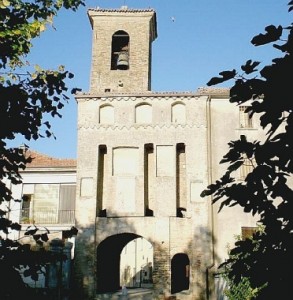Castle of Casaloldo
Castle of Casaloldo or castle of Casalodi is a fortification of medieval origin defended by neighboring lords.
Castle of Casaloldo it was a mixed fortified structure, consisting of a brick tower with a drawbridge, a moat surrounding the area and a palisade with a walkway above the embankment formed by the excavation earth of the excavation of the moat; a fortification typical of the Po Valley. The construction of the fortification is probably of the eleventh century, due to the presence of the Ugoni-Longhi counts, a family with vast estates between the eastern and upper Mantuan bresciano, of which one branch takes its name from the village, Casaloldi. Around 1190 the Casaloldi settled in Mantua, but were chased by Pinamonte Bonacolsi by deception towards the end of the 13th century, an episode also mentioned by Dante Alighieri in the Divine Comedy in the 20th canto of the Inferno. In 1237 the castle of Casaloldo was destroyed with that of Carpenedolo and Castelnuovo by the Ghibelline troops of Reggio on the occasion of the descent of Emperor Federico II. In the fifteenth century the castle was under the control of the Serenissima but, during the 1441 conflict against Visconti and Gonzaga allies, Casaloldo decided to pass to the enemies, but wins the Republic of Venice that therefore imposes the knockdown of the entire fortification. Another episode occurred in 1509, when Alessio Beccaguto, in command of the Gonzaga troops, attacked the castle but, thanks to a strong reaction from the citizens, had to fall back and suffered a huge defeat. Between the eighteenth and nineteenth centuries, like many others, the fortification lost interest and was gradually dismantled, filled the moat and kept the only brick entrance tower still visible, with the addition of a roof and the ‘clock.

